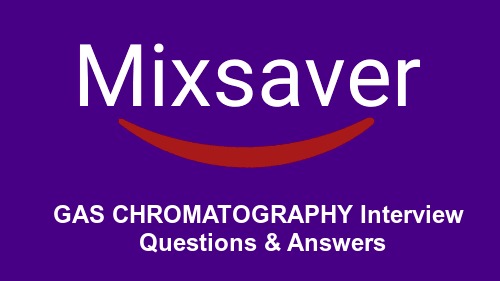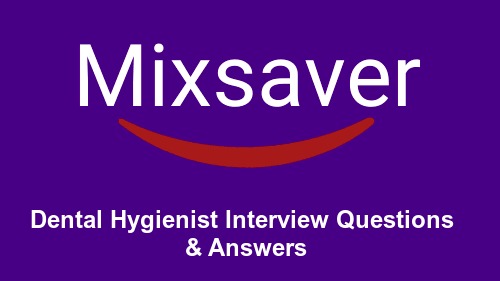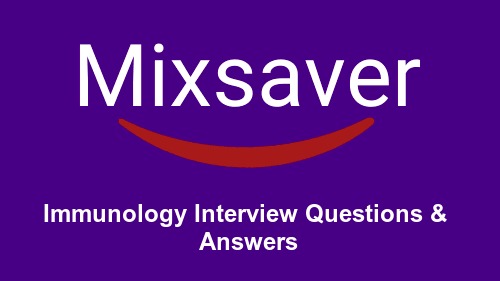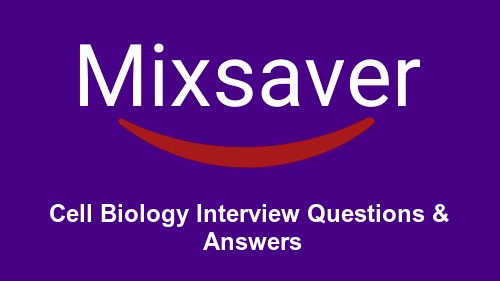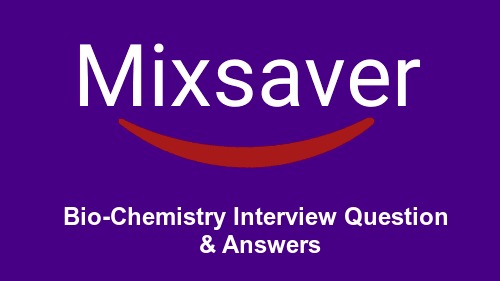1. What is business analysis?
One should not restrict the BA role to only being a link between Non-It and IT or only for development projects.ABA is someone who is able to bring in improvements, changes (technology, process, people, etc.) in an efficient manner. So a BA could be part of the marketing team that helps the marketing team in providing estimates/high-level solutions for a said project which is under the process of procurement. Or he could be someone involved during the Requirement gathering/analysis once the project is initiated. Or he could be someone who brings profit to the company by performing process improvement activities ROIs at the process level. Last but not least BAs could be domain-specific as well.
2. What is the career path for a Business Analyst?
A Business Analyst in the IT field has many varied directions among which to choose a career path. The most direct would lead to a Lead Business Analyst position and then Project Manager whereby the incumbent manages projects through the entire lifecycle from inception to post-implementation including the management of business analysts’ system analysts quality assurance analysts and most likely development project managers or team leads. That path would then lead to Program Management perhaps PMO management or Product Manager and on directorship. In addition a good Business Analyst may find they are heading toward a Customer Relationship Manager position whereby they become the primary IT interface to a given business unit (BU). This role most often leads to a position within the BU as a Manager of Applications or a Process Management role. Process Management opens many jobs including process re-engineering quality program development and large scale or enterprise process management programs such as ITIL or Six Sigma initiatives. These roles will continue to proliferate as companies realize the benefits of having an SME in process and quality. And still many Business Analysts find their understanding of business process entirely portable into purely system-related positions in the business side that are only peripherally related to IT. These of course may lead to quantitative roles manager roles or operational roles such as supply chain logistics et cetera. Of central importance to a successful Business Analyst is the interest in speaking to people. Face-to-face verbal communication is paramount to support other tools such as surveys and diagrams. Incumbents must be interested in understanding not only the pieces that comprise a system but the people that comprise it and the realities that embrace the system. Briefly the Business Analyst must understand and not judge the what should be and the what is.
3. How would you transform business requirements to functional requirements?
While preparing Business requirements documents you mention why you need to built a system,i.e. problem statement. What you need to do while creating functional requirements is you have to specify is, solution of the problem. Specify thoroughly business problem and explain the solution for the same. Business requirement documents does not necessarily contains the solution part, the functional requirement may contain how the end-user wants the system to perform. Don’t forget to add non-functional requirements same doc. Following is the instance of Business Requirement, Functional Requirement and Non-FunctionalRequirement.Business Requirements :- sales order is made against customers purchase order. Sales order isgiven for approval to upper authorityFunctional requirement:- Sales order shall be made with reference from Purchase order and itshould be approved from upper authority.
4. How do you resolve issues?
I would rather focus on issues and the facts related. Origin of issue, the severity of the issue, implications, and possible solutions to solve the issue. Try not to focus on the person who brought up the issue. Another important part is how to avoid similar issues in the future.
5. What analysis and modeling techniques do you use to translate business objectives into system requirements?
Create project-initiation diagrams including business use cases, activity diagrams, workflow
diagrams, flowchartsDetermine project scope and derive context diagrams and project use cases from the business
diagrams detail the use cases by using activity diagrams or other techniques
Create high-level analysis dataflow diagrams, domain class diagrams, and entity-relationship
diagrams from the use cases or other high-level diagramsRecognize and understand the various design models, including the other relevant types of
UML diagrams, detailed design entity-relationship diagrams, and decomposed dataflowdiagramsDetermine when to use which modeling technique, following them through a project life cycle, and understand which diagrams are derived from others understand the basic concepts of normalization and decomposition so can converse
intelligently on the topic and review diagrams that have been normalized or decomposed.
6. Mention some of the tools commonly used by business analyst?
There might be various tools that you as a business analyst would be using depending upon thework environment.The primary tools are:MS-Office (Especially Word)MS-Visio (for visualizing the concepts, creating diagrams)But a lot of bigger organizations have been using Rational Software. Rational software licensingis expensive so you might not find it being used everywhere.Rational Requisite Pro (for Requirement Management)Rational ClearCase/ClearQuest (For change management)I have also found that some places like using MS-SharePoint, telelogic DOORS and other toolsfor document collaboration. I would say, keep a working knowledge of MS SharePoint, at least.Sometimes you might end up being a BA com QA. As such, it is nice to have a workingknowledge of creating Test cases, using Load Runner, QTP etc.
7.Explain equivalence class?
Equivalence class a mathematical concept is a subset of given set induced by anequivalencerelationon that given set. (If the given set is empty then the equivalence relation is empty andthere are no equivalence classes; otherwise the equivalence relation and its concomitantequivalence classes are all non-empty.) Elements of an equivalence class are said to beequivalent under the equivalence relation to all the other elements of the same equivalence class.For each equivalence relation there is a collection of equivalence classes. Any two differentequivalence classes are disjoint and the union over all of the equivalence classes is the given set.Equivalence classes and their corresponding equivalence relation are defined in set theory a vitalfoundation for mathematics and those fields that use mathematics.
8.What are the problems solved by business analysis?
As a BA the most critical part is in gathering requirements (we should understand them very wellfrom a Business User /stake holder point of view!!!)Reason: There might be a chance for the whole project to go in the wrong path due to wrongunderstanding of the Business users/ Stake holders’ needs and the gathered requirements createdfor the work following that step… i.e. going from A to C instead of going from A to B. Notes: (Business Users: are the individuals who work in organizations in different departmentslike Logistics accounting finance Inventory) in the company who wanted the software in Placefor them to work on to help the Customers.Stake Holders: Someone who is related to the Project? 2 types of People are involved:Direct Stake holders: business end users customers developers tech team.Indirect stake holders: management etc.The Project Manager responsibility (usually) identifies the stakeholders determine their needsand expectations and more important must manage and take their help for the project success.
(You should Understand them well to provide them with right service for the right success of the project)...SME’s: are the Subject Matter Experts who know about that project and have in-depthknowledge about that software application used and that particular business domain knowledgelike Finance (terms and permutations etc.) Accounting (Business Planning Ledger maintainingForecasting) Mortgage (Local banking rules Knowledge about compliancy of applications forms/applications that needs the authorizations of the local Government bodies or countiesUnderwriting conditions (How flexible the Loan lending organizations at the individuals creditcheck or History)So The SME’s help the Project Manager or BA to help them understand about the necessities or needs of the Business Users or Stake holders like/interests- (How the Project help save time for the transactions or? how much secure/security is needed the application wise or profitable over long run) and SME’s explain How the Stakeholders or Business Users want the application to beor appear to be for the Customers or Business Users).
9. What is the difference between data model and an entity relationship diagram?
A data model is a model which shows how data is stored and used for e.g. a normal database Ithas 3 main parts1)Structural part:- how data is structured2)Integrity part:- Rules governingstructure3)Manipulation part:- operators used to select,update,querry that data,egselect,update,delete commands in sqlTo furhter add Data Modelling is when we add this theoryto Live instance.ENTERPRISE DATA MODEL(ENTERPRISE RELATIONSHIPMODELING) :- This can be called as an conceptual model or semantic model The sub parts of an ERM are1)Entity:- It is an object,eg employees,computer2) Relationship:- It captures howtwo or more entities are related to each other3)Attributes:- Every entity has its own sets of attributes (e.g. PAN no in India for each employee or SSN in US)To clarify the point look at egA employee is an entity belonging to entity sets(All employees) which has a relationship withdepartment, and attributes is emp code.
10.Who uses the output produced by business analyst?
The output will be used by the Both IT and Non-It People, as IT people use this document as keyfor the building of the application and Non - It people use those document where they can see prototype of their application.
11. What qualities do you feel a successful Business Analyst should have?
First of all a successful Business Analyst should have the leadership quality. Most essential skills supposed to be are: Good Communication skills and Good Documenting Skills.
12. How will you define Risk and Issue?
If I google for this question i will get several answers. But According to me if I will say it in simple
An Issue is a risk which already happened,
But Risk is an event which may or may not happen in future.
13. What documents should be delivered by a Business Analyst?
The documents delivered by a Business Analyst are very important and they include functional and technical specifications, business requirements documents or BRD, requirements traceability, use case diagrams etc.
14. What is the difference between Business Analyst and a System Analyst?
A business analyst deals with the more high level and functional aspects of the project and is generally not involved in technical details related to the project. A system analyst on the other hand is closely involved with the technical design aspects.
Both business and system analyst will communicate with the business but the nature of conversation between a business analyst and business user is more functional and tends to focus on higher level user requirements. A system analyst usually communicates a more technical nature of topics and usually interacts closely with technical architects and even developers. Both the above roles can sometimes overlap and there have been posts such as business systems analyst.In a typical uml terminology business analysts are expected to write use case and process flows while system analysts focus on sequence and activity diagrams.
15. Explain what is the purpose of business use case scenarios?
Use cases describe the system from the user's point of view. A business use case is described in technology-free terminology which treats the business process as a black box and describes the business process that is used by its business actors (people or systems external to the business) to achieve their goals (e.g., manual payment processing, expense report approval, manage corporate real estate).
The business use case will describe a process that provides value to the business actor, and it describes what the process does. Business Process Mapping is another method for this level of business description.
16. What does a Business Analyst do, what are their Roles and responsibilities?
The most important responsibilities of a business systems analysts are as a communication conduit between the stakeholders and the team.
17. What are some of the common tools that a business Analyst uses?
The common tools that can be used by a business analyst are MS Visio, MS word, MS Excel, Power point, Quality center/test director MS Project. There may be tools that are client specific also, but these will be supplied the client.
18. What is use case diagram used for?
The use case diagram defines the role of each actor that is associated to a particular role or system. A use diagram is also a behavioral diagram and a part of UML.
An example of this is an “Order Management” as the main function, in such a case the person that is given the order is an actor.
19. How do you normally gather Requirements from end user?
If there are a lot of end-users, then a workshop method can be used for the requirements collection. The business analysts can carry out face-to-face interviews if there are not a lot of end users.
20. What do you know about GAP Analysis?
It is a process of comparing and determining the difference between two things or processes.
21. How can you explain the user centered design methodology?
It all depends on the end users. In such scenario, we develop the system with a user’s point of view. Who are the end users, what they require etc. Personas are basically social roles, performed by any actor or character. It is derived from a Latin word meaning character. In marketing terminology, it represents group of customers/end users.
22. Define Application Usability?
Application usability is actually the quality of the system that makes the system useful for its end users. System’s usability is good if it is capable of achieving users’ goals. Personas are basically social roles, performed by any actor or character. It is derived from a Latin word meaning character. In marketing terminology, it represents group of customers/end users.
23. What is Pareto Analysis?
It is a decision making technique, also known as 80/20 rule. It is used for quality control and defect resolution. It explains few factors that can be responsible for big problems. It is named as 80/20 rule, because as per this rule, 80 % effects in the system, arises from 20 % causes.
24. Have you ever used Kano Analysis in your previous jobs and how do you define it?
Yes, I have used Kano Analysis in one of my previous jobs. Kano Analysis is used to analyze a system in terms of its requirements to identify its impact on customers’ satisfaction.
25. How many types of actor can be there in a Use-Case?
There are primary and secondary actors. Primary actors start the process and secondary actors assist them. Moreover, actors can be of four types such as Human, System, Hardware and Timer.

